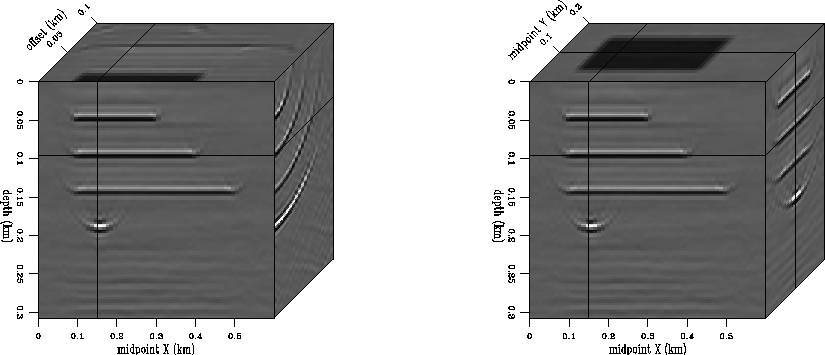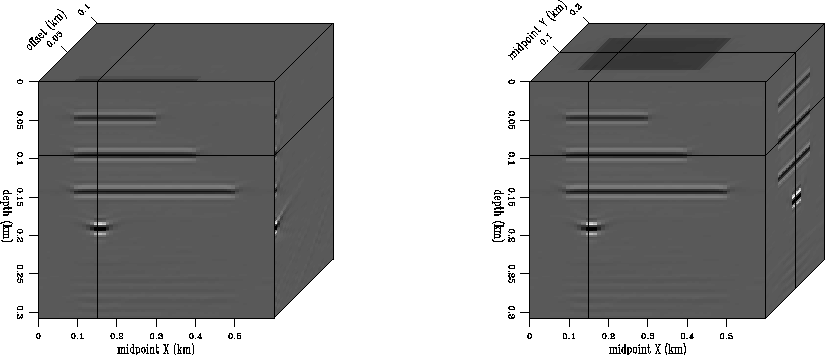




Next: Conclusions
Up: Sava: CA residual migration
Previous: theory
In this section, I present a synthetic example of Stolt migration and
residual migration for common-azimuth data. The model is represented by
a set of four plane reflectors at different depths, with different
lateral dimensions and varying reflectivity (Figure 1).
Figure 2 shows the result of Stolt modeling using the
true velocity v=3.0 km/s. Next, I apply Stolt migration with a velocity
of v0=3.6 km/s (Figure 3). Since the velocity is not the
true one used to generate the data, the image is not focused correctly
at the three original reflectors.
Finally, I use Stolt common-azimuth residual migration as described in
the preceding section and with a velocity ratio v0/v=1.2 to get
the image in Figure 4. Now the original reflectors are
well-focused at their original locations.
model
Figure 1 The reflectivity model.
The right panel represents the zero-offset view in the
common-azimuth space, while the left panel represents the
prestack view for the inline selected on the right panel.





data
Figure 2 The data generated using Stolt common-azimuth
modeling. The velocity used for modeling is v=3.0 km/s.
The right panel represents the zero-offset view in the
common-azimuth space, while the left panel represents the
prestack view for the inline selected on the right panel.





mig
Figure 3 The image obtained using Stolt
common-azimuth migration. The velocity used for migration
is v0=3.6 km/s. Since v0 > v, the image is clearly
over-migrated.
The right panel represents the zero-offset view of the
common-azimuth data, while the left panel represents the
prestack view for the inline selected on the right panel.





rst
Figure 4 The image obtained using Stolt
common-azimuth residual migration using velocity ratio v0/v=1.2.
The image is nicely focused at zero-offset.
The right panel represents the zero-offset view of the
common-azimuth data, while the left panel represents the
prestack view for the inline selected on the right panel.










Next: Conclusions
Up: Sava: CA residual migration
Previous: theory
Stanford Exploration Project
10/25/1999




